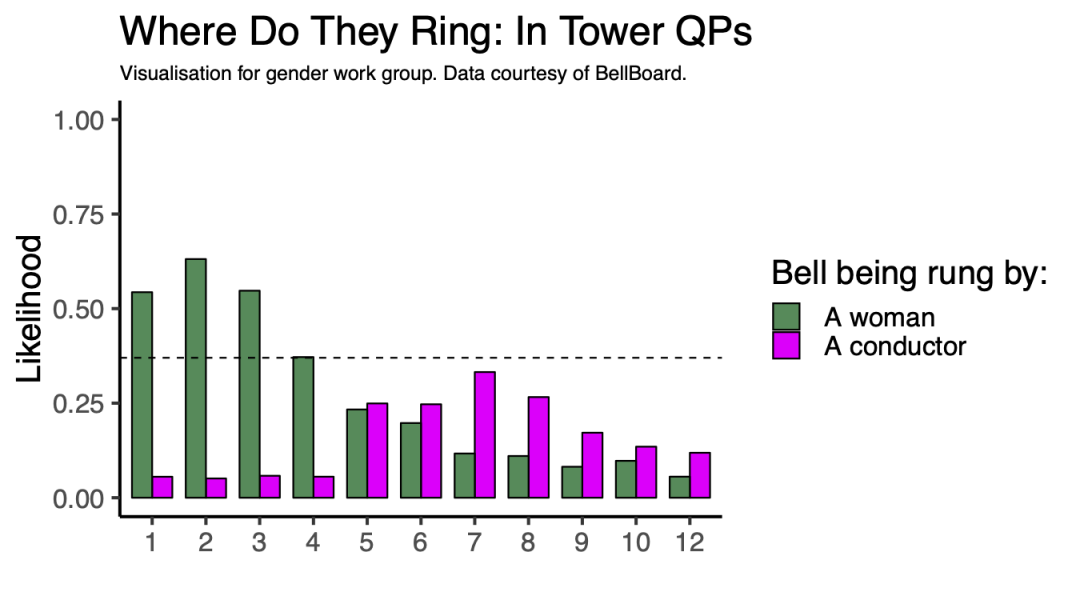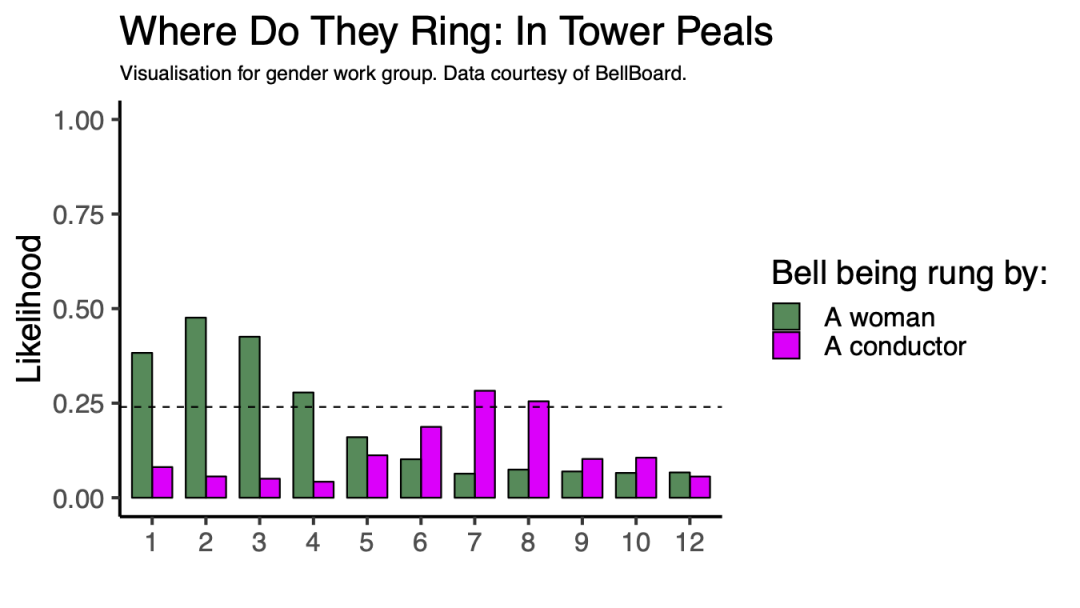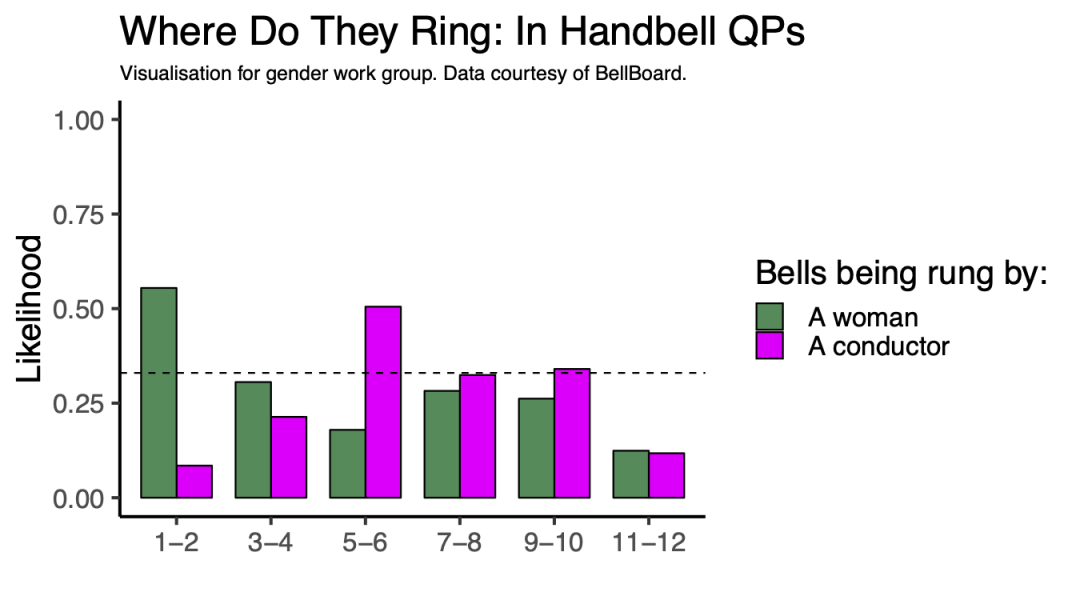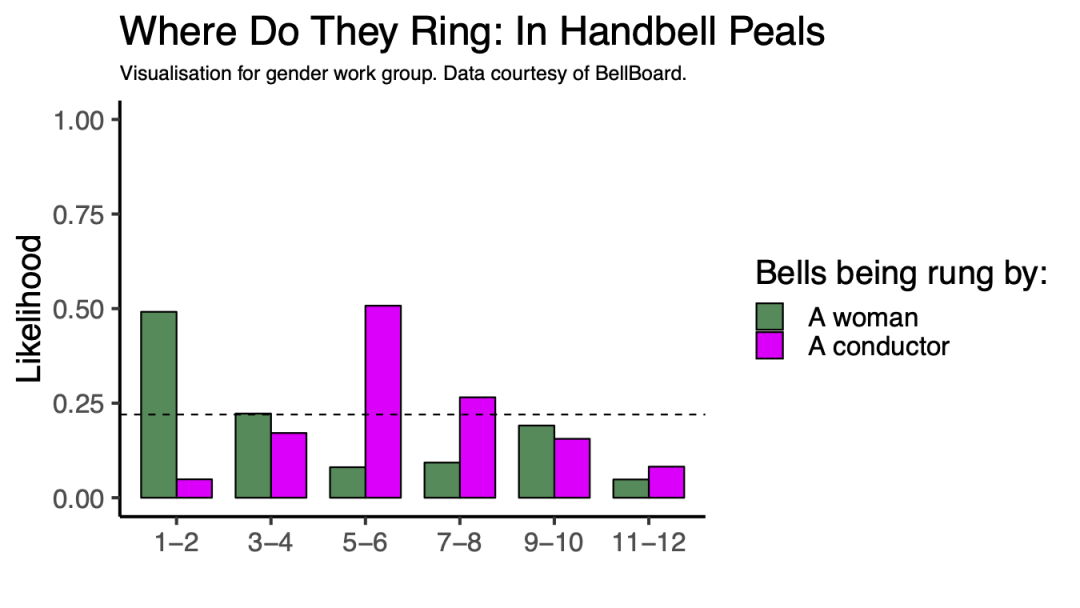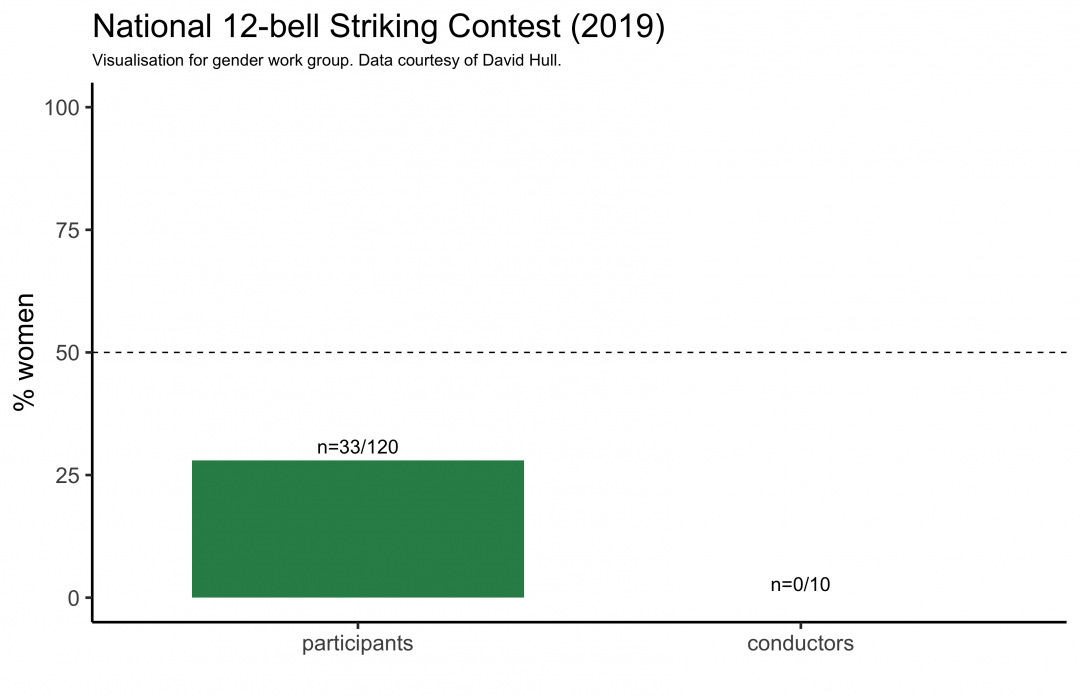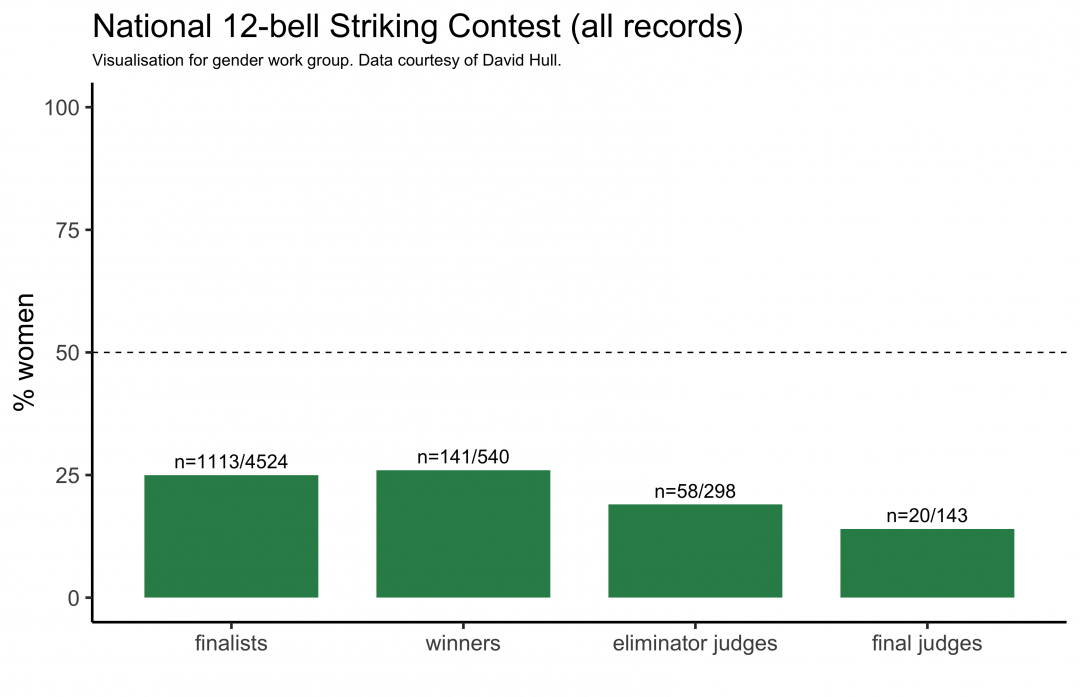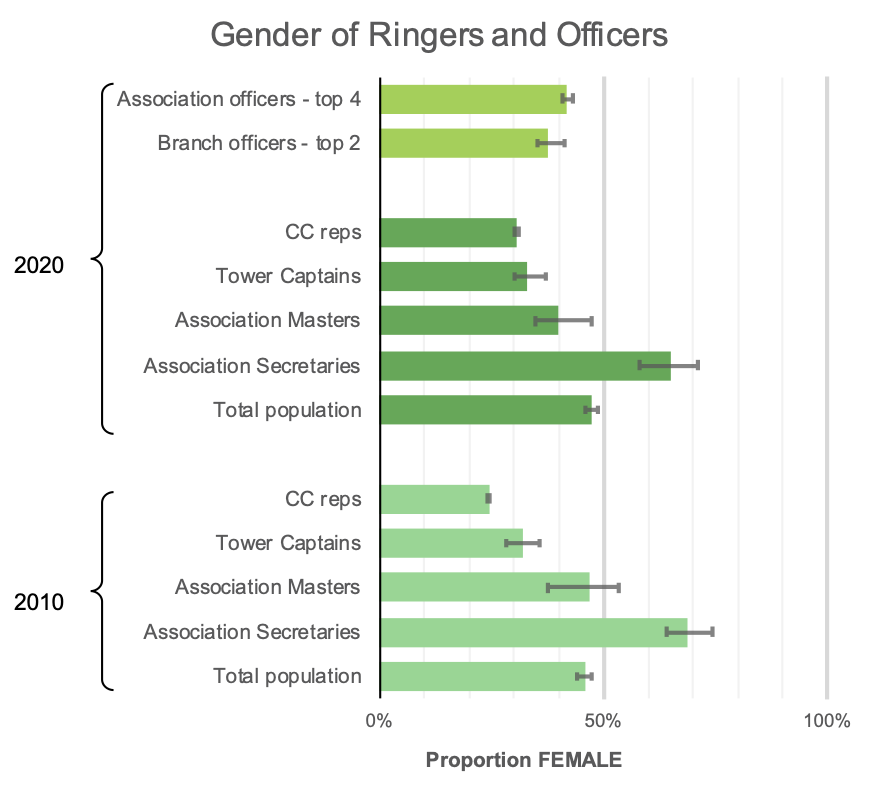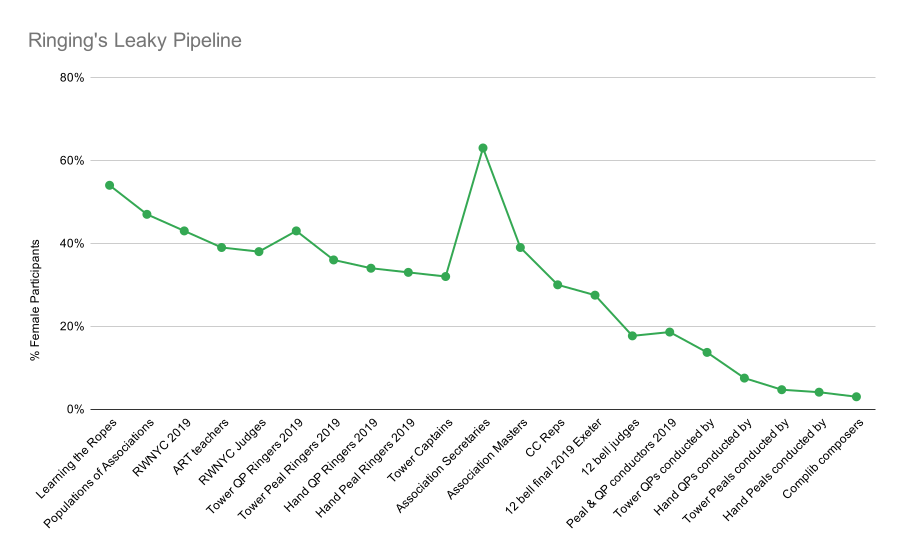ART participation - learners and teachers
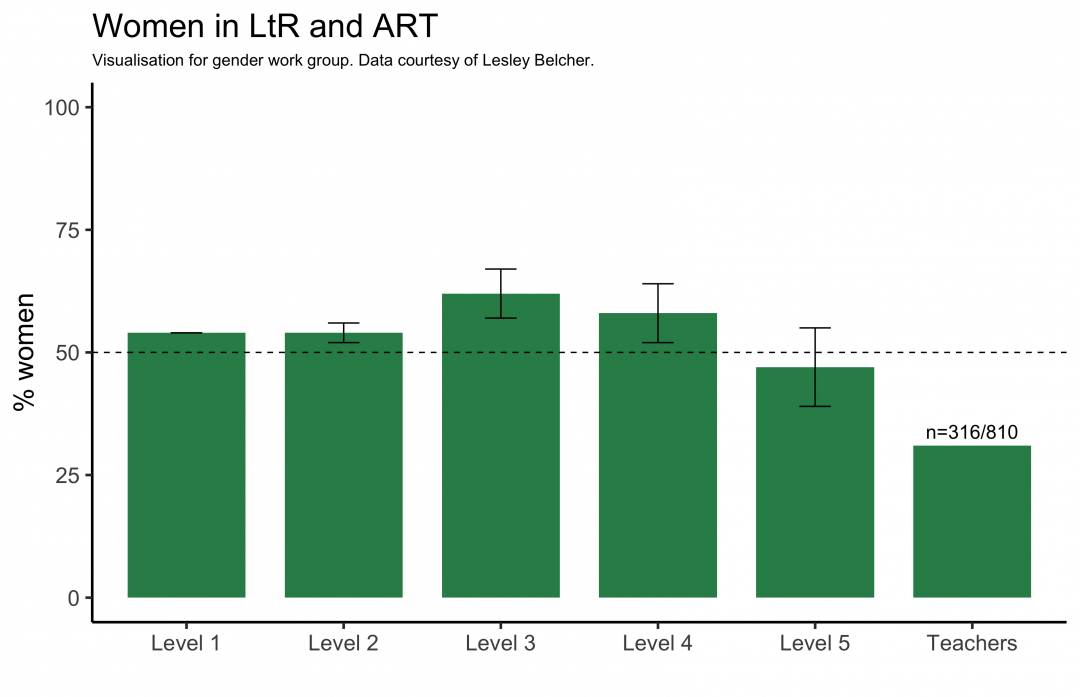
Data from the Association of Ringing Teachers shows that new learners are relatively balanced, and generally stay that way throughout the Learn to Ring scheme.
Compare this to the balance of people who have become ART members and have completed the scheme to become ART teachers. Full article and analysis here: From Learners to Contest Judges – is gender balance being achieved in ringing?
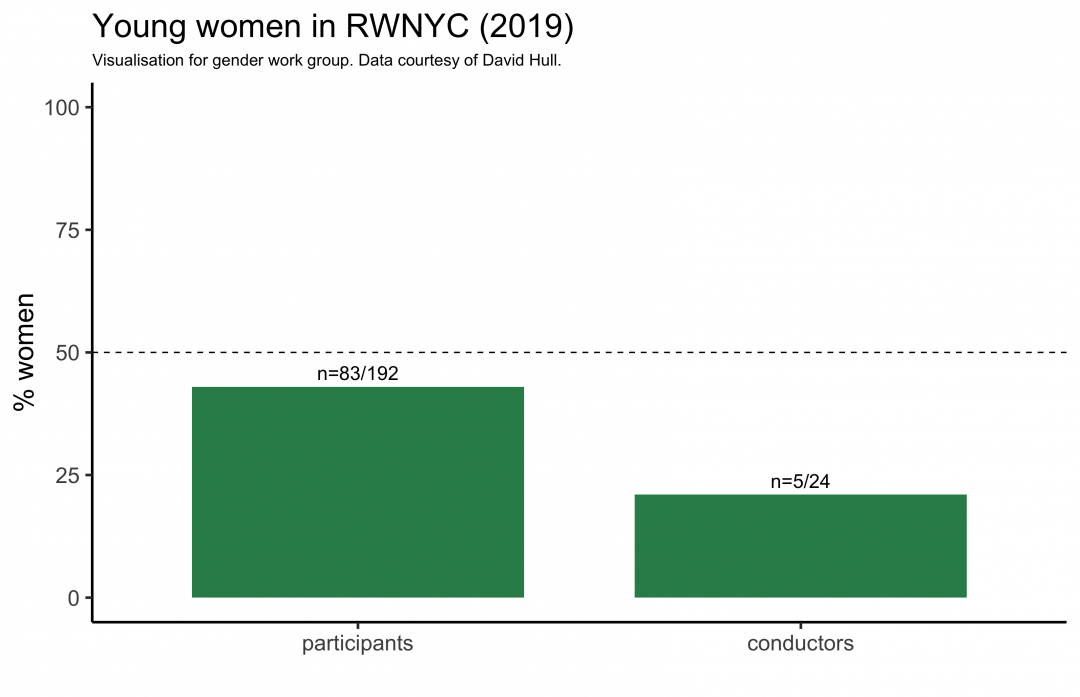
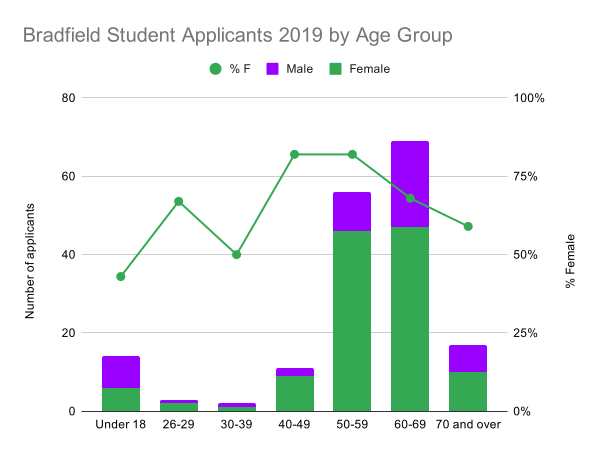
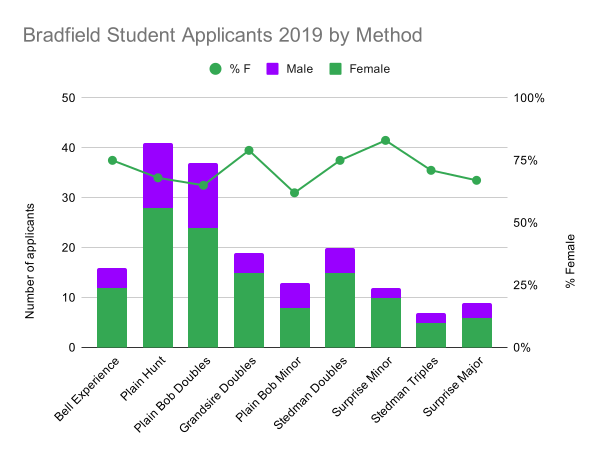
.png)
